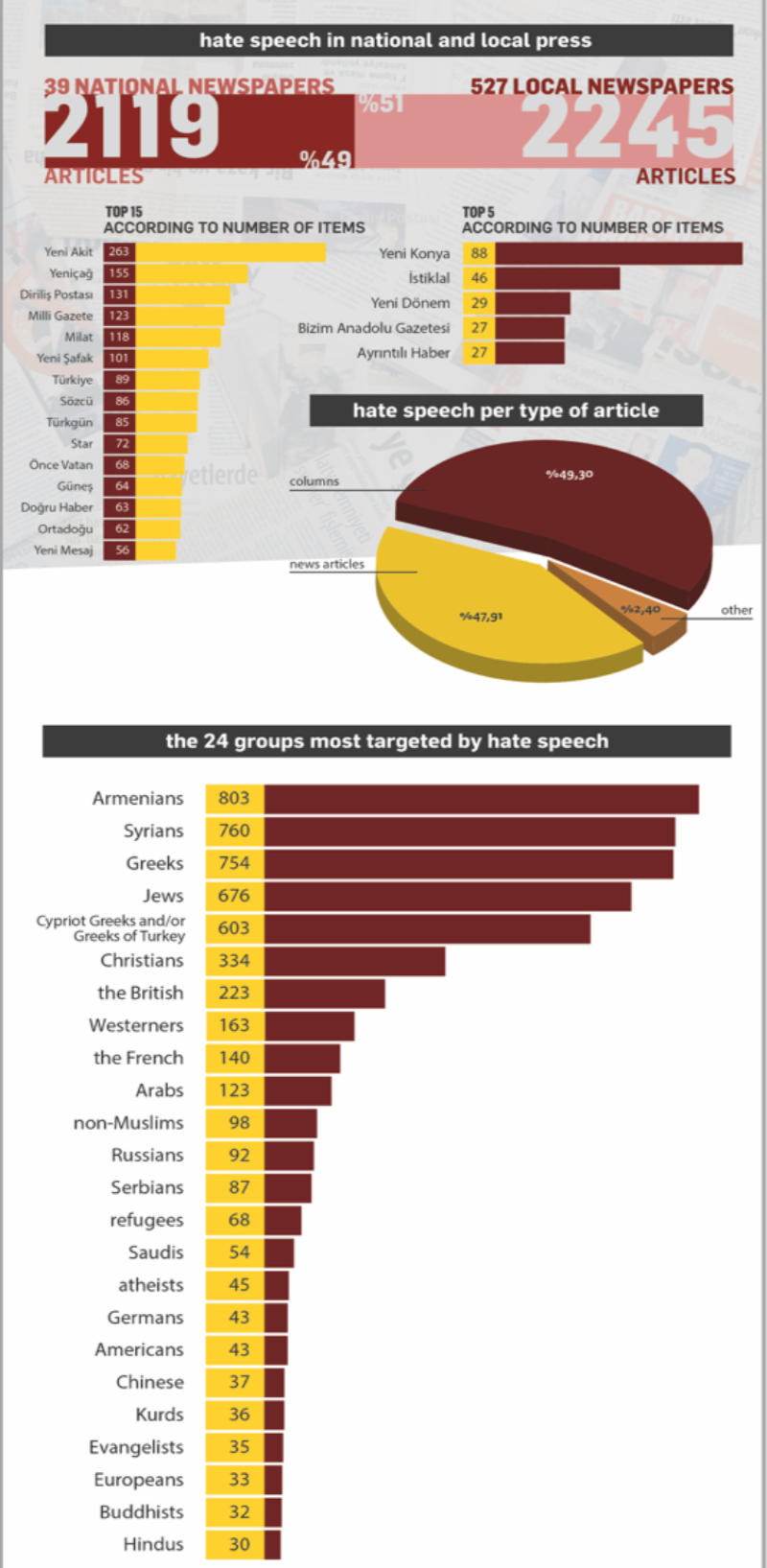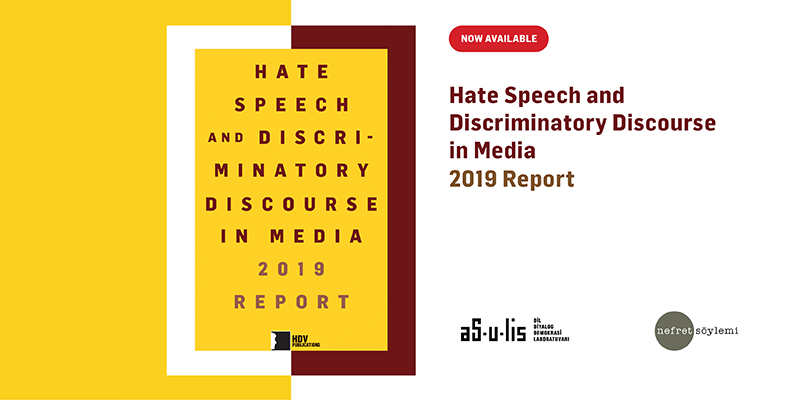Hate Speech and Discriminatory Discourse in Media 2019 Report is prepared in the scope of Media Watch on Hate Speech project, includes along with annual results along with quantitative and qualitative analyses of hate speech data for 2019 and two discriminatory discourse reports entitled ‘Discriminatory discourse against Kurds in Turkey’s print media: The example of 2019 local elections’ focuses on discriminatory discourse against Kurds in print media.
Click here to read the full report.
CHAPTER I: HATE SPEECH IN 2019 IN PRINT MEDIA OF TURKEY
As part of the monitoring work, 4364 columns and news articles targeting national, ethnic and religious groups were found in national and local newspapers in 2019. It was observed that 108 of them contained different categories of hate speech against more than one group. In these texts, 5515 hate speech content targeting 80 different groups were found.

Click for accessing all articles and columns that are identified to contain hate speech:
CHAPTER II: 2019 DISCRIMINATORY DISCOURSE REPORTS
‘Discriminatory discourse against Kurds in Turkey’s print media: The example of 2019 local elections’ report analyzes around which topics and themes the print media covers Kurds and how Kurdish identity and Kurds are presented in newspapers as a public platform; considering the observation that media’s discriminatory discourse becomes more obvious and clear during an election period when political debates intensify, the focus was the period leading up to local elections in 2019.
The report begins with Mesut Yeğen's introduction titled 'On the Margins of the Nation: Kurds”'. Then, in the ‘Print Media Analysis’, the findings of the print media analysis for the report are included. 9 national newspapers are selected from the national press in Turkey and a media monitoring work was carried out based on the keywords.
In the articles and columns that were analyzed under the categories “acceptable” Kurds / “unacceptable” Kurds and Kurdish identity as a “national security problem”, there is a dominance of discourses that cannot be directly defined as hate speech but which are constructed more carefully to convey their discriminatory and marginalizing messages in more subtle ways. And the texts analyzed in the categories “association of Kurdish language to crime” and “Kurds across the border” are considered as examples of direct hate speech since they target Kurds as a whole and label the identity itself as the carrier of negativity by making generalizations about Kurdish identity.





